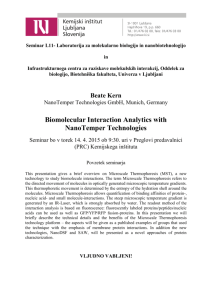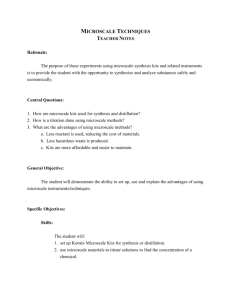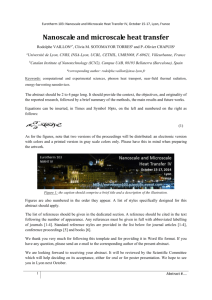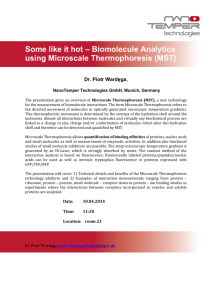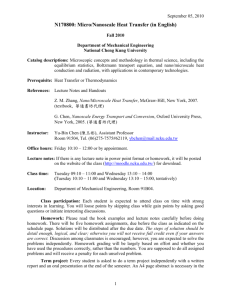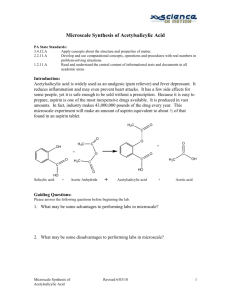Introduction to Microscale Techniques
advertisement
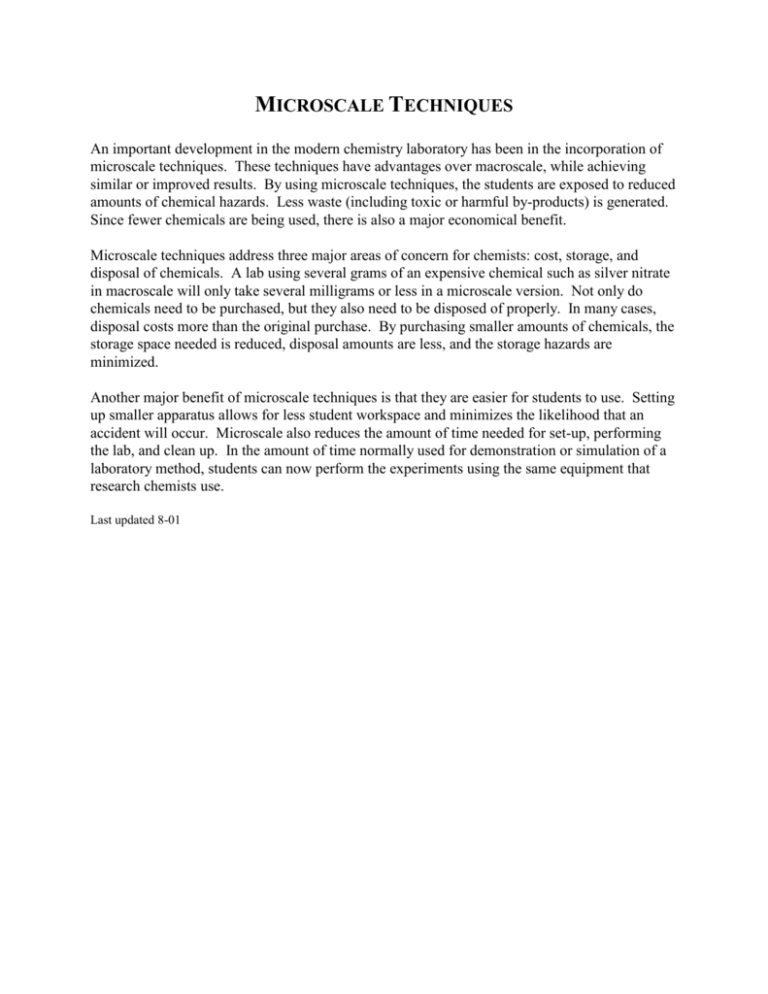
MICROSCALE TECHNIQUES An important development in the modern chemistry laboratory has been in the incorporation of microscale techniques. These techniques have advantages over macroscale, while achieving similar or improved results. By using microscale techniques, the students are exposed to reduced amounts of chemical hazards. Less waste (including toxic or harmful by-products) is generated. Since fewer chemicals are being used, there is also a major economical benefit. Microscale techniques address three major areas of concern for chemists: cost, storage, and disposal of chemicals. A lab using several grams of an expensive chemical such as silver nitrate in macroscale will only take several milligrams or less in a microscale version. Not only do chemicals need to be purchased, but they also need to be disposed of properly. In many cases, disposal costs more than the original purchase. By purchasing smaller amounts of chemicals, the storage space needed is reduced, disposal amounts are less, and the storage hazards are minimized. Another major benefit of microscale techniques is that they are easier for students to use. Setting up smaller apparatus allows for less student workspace and minimizes the likelihood that an accident will occur. Microscale also reduces the amount of time needed for set-up, performing the lab, and clean up. In the amount of time normally used for demonstration or simulation of a laboratory method, students can now perform the experiments using the same equipment that research chemists use. Last updated 8-01
